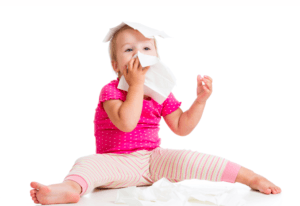Blog
Sugar and allergies in kids
Most kids are partial to the sweet stuff. Unfortunately, too much can contribute to a number of negative health effects, such as excessive weight gain, type 2 diabetes and other symptoms associated with metabolic syndrome, tooth decay, and a preference for those foods high in free or added sugars later in life.
This is not ideal.
Sugary drinks are a primary source of free or added sugars, particularly fructose. Regular and high intake places a heavy burden on the liver. As a result, children are now being diagnosed with non-alcoholic fatty liver disease.
In addition to such health effects, recent research now suggests a link between allergic reactions, such as asthma and hay fever, in children and adolescents and the consumption of sugar-sweetened beverages.
Sugar and allergies in children
An analysis of 860 children and 1,142 adolescents in the 2005-2006 National Health and Nutrition Examination Survey (NHANES) has provided some evidence of an association between allergy and high intake of sugary drinks with excess free or added fructose, including apple juice, non-diet fruit and non-diet soft drinks.1
Allergic symptoms, for the purpose of this study, included having a problem with sneezing, or a runny or blocked nose not due to a cold or the flu; being diagnosed with a sinus infection; having experienced hay fever; or having had an itchy rash coming and going for at least 6 months or a rash at any point in the previous 12 months.
Even after controlling for potential confounders, researchers found:
- Children drinking non-diet sugary fruit drinks at least 5 times per week had 2.5 times greater odds to have allergic sensitization compared with children consuming these 1-3 times per month.
- Adolescents drinking high-free or added fructose beverages 1-4 times per week or at least 5 times per week were 5 times more likely to have allergic symptoms compared with adolescents who rarely consumed sugary drinks.
- Teens chugging back apple juice at least 5 times per week were twice as likely to have allergic sensitization.
The researchers focused on fructose intake, stating: “Fructose is sweeter than glucose or sucrose, and in soft drinks and other sweet foods, fructose rewards sweet taste and delivers calories while providing little nutrition.”
In other words, as an added or free sugar fructose isn’t much good for us, but it is easy to consume and kids taste buds love it.
The researchers state that while the findings provide evidence for a suggested link between intake of beverages high in free fructose and allergies in kids and adolescents, more research is needed to confirm this theory and to understand why it happens.
However, it may pay to be safe rather than sorry, so here are some dietary suggestions that may help reduce the incidence of allergic symptoms.
Keep the allergies at bay
First, ensure the intake of added and free sugar – especially sugary drinks – is down in kids, with none at all in those under the age of 2. Limiting added sugar and heavily refined and processed food intake, and consuming mostly real, whole and minimally processed foods instead, can help keep inflammation from spiralling out of control, equipping the body to be less trigger happy reacting with allergic symptoms.
Secondly, boost intake of anti-inflammatory whole foods that are also abundant in goodies such as vitamin C, omega-3 fatty acids, probiotics and the phytonutrient quercetin, as these can help with combating allergic responses, such as hay fever. We have more information on this here.
Lead by example
When shaping a child’s nutritional habits to support their health, keep in mind the household is the earliest exposure a person has to different tastes and foods. In fact, there may even be a link between a mother’s diet in pregnancy and the unborn bub’s future taste preferences, as well as health outcomes including allergies, and excessive weight gain and mental health as well.
Following birth, habits established in early childhood (such a desire for the sweet stuff) can have a lifelong impact.
It is imperative the entire household – parents, children and whoever else resides there – lead by example, creating a healthy food environment by making it the norm to eat mostly real, whole food, while limiting children’s exposure to, and intake of, added or free sugars, and heavily processed, packaged and junk foods.
By Angela Johnson (BHSc Nut. Med.)
References
- Yu, R et. al 2018 ‘Excess Free Fructose Beverages and Allergy in Children and Adolescents: Results From NHANES 2005-2006’, Annals of Family Medicine, vol. 16, no. 5, pp. 408-418.












